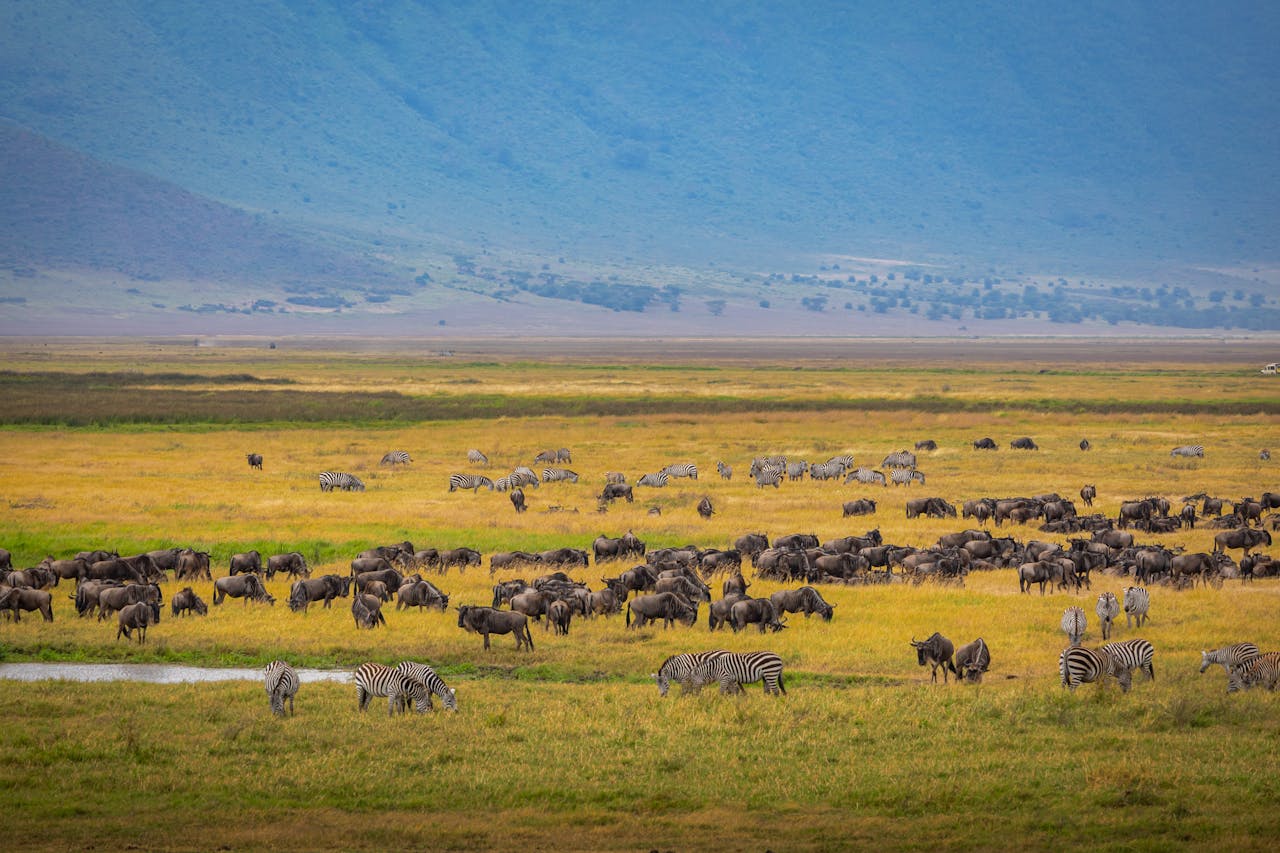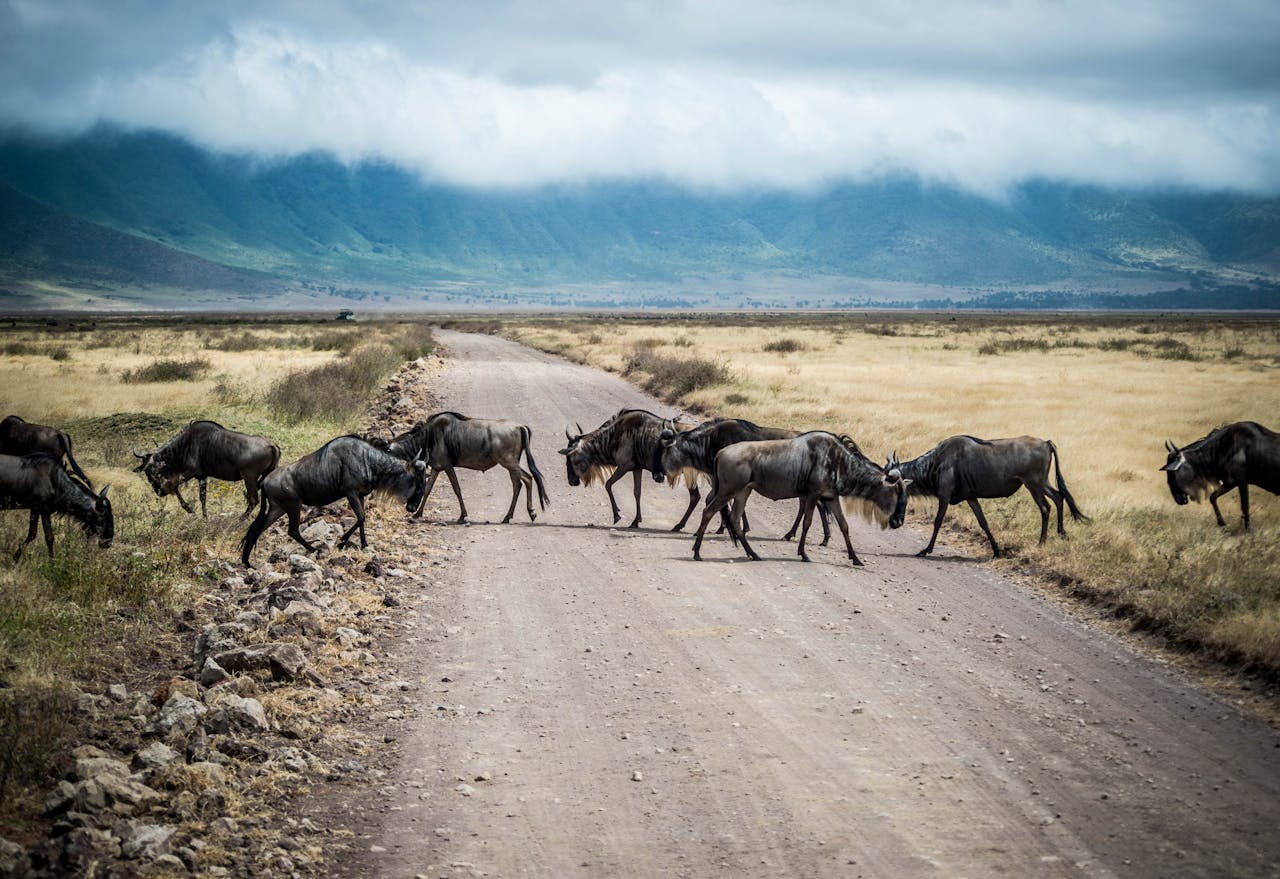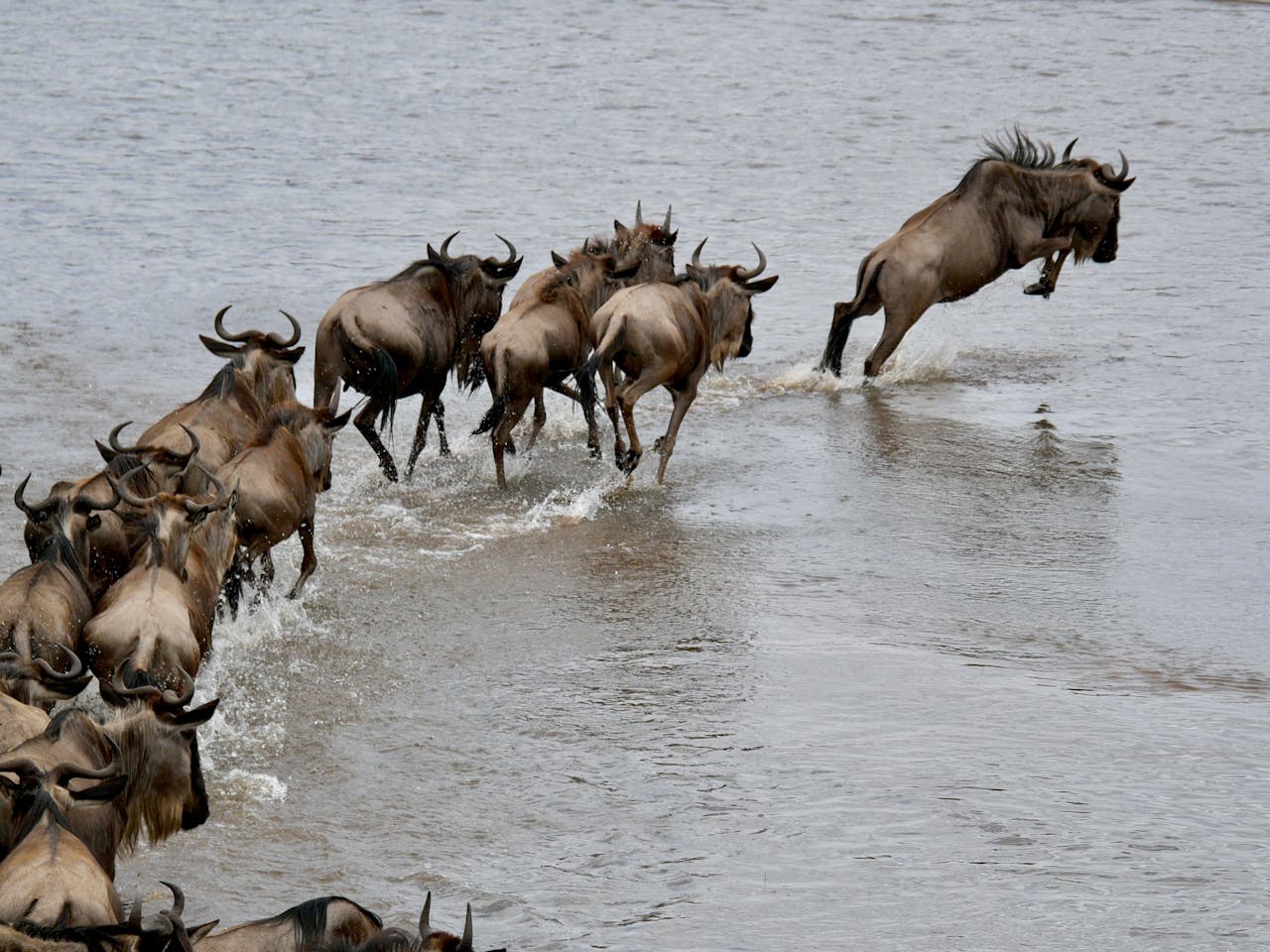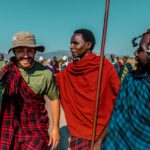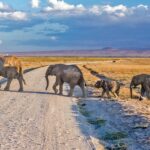The Great Migration is one of Africa’s most spectacular natural events, where millions of wildebeest, zebras, and gazelles travel across the Serengeti and Maasai Mara in search of fresh grazing. Timing your visit to catch this incredible journey can be tricky, so here’s what you need to know.
The Migration Calendar
The migration moves in a circular pattern throughout the year:
- Calving Season (January–March): The wildebeest give birth in the southern Serengeti, creating a stunning spectacle of thousands of newborns.
- Dry Season Movement (June–July): As the rains end, herds move northwards, heading toward the Maasai Mara.
- River Crossings (July–September): The dramatic crossing of the Mara River is a highlight, filled with thrilling moments as animals’ brave crocodiles and strong currents.
- Return Journey (October–December): The herds head back south as the rains return, feeding on fresh grass.
Best Locations to View
Each phase has its best vantage points:
- Southern Serengeti: For calving season and newborn sightings.
- Central Serengeti: Great for predator action as the herd’s feed.
- Maasai Mara: Famous for the river crossings and vast plains.
What to Expect
Witnessing the Great Migration is unpredictable the animals don’t follow a strict timetable! Expect breathtaking wildlife moments and possibly close encounters with predators. Booking with an experienced guide increases your chances of seeing the action.
Booking Tips
The migration season is popular, so plan early and book your accommodation and safari well in advance. Choose camps or lodges near migration hotspots for the best experience.
With the right timing and preparation, witnessing the Great Migration will be a memory you cherish forever.
